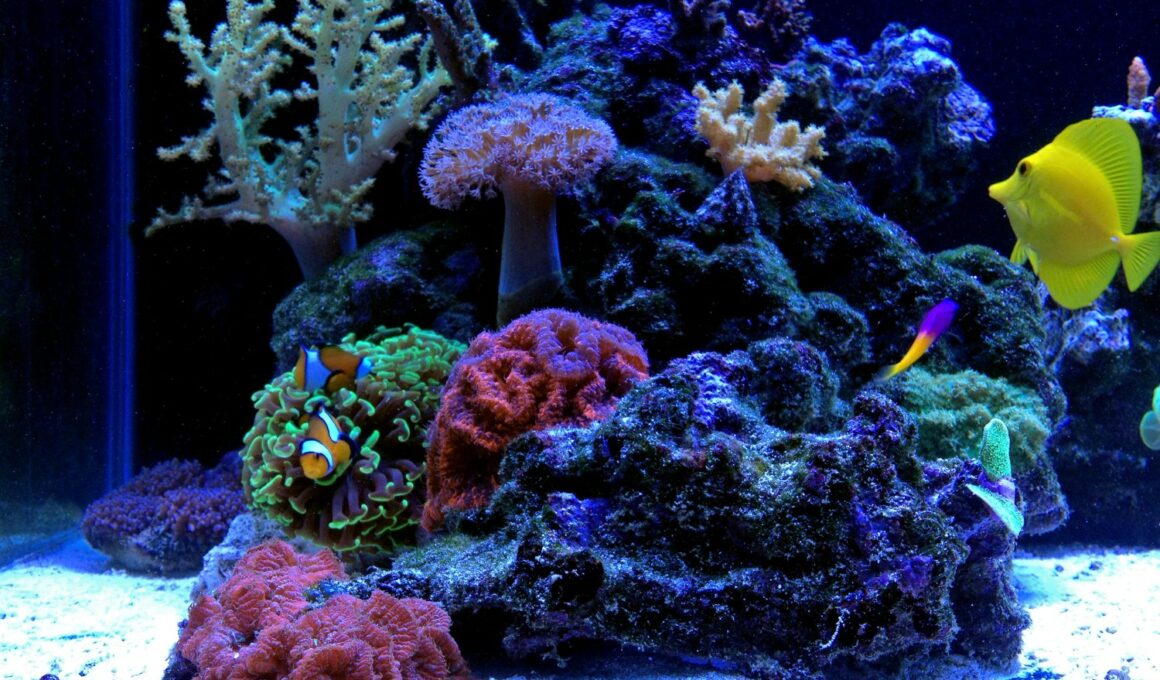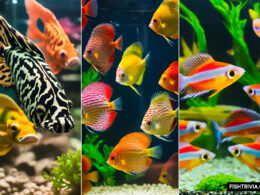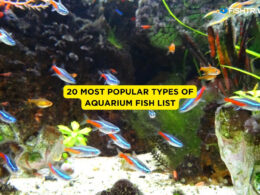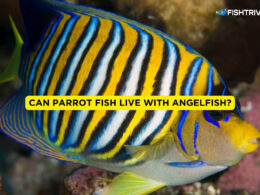In this article Show
I remember the first time I set up my home aquarium. The sheer joy of watching those shimmering finned wonders glide effortlessly in their aquatic haven was mesmerizing. But when it comes to maintaining a 36-gallon tank, I’ve learned that size does matter.
Not just for the aesthetic appeal, but for the well-being of our finned friends. A 36-gallon tank strikes a harmonious balance between space and manageability. It’s spacious enough to offer a comfortable home for a variety of fish, yet compact enough to fit snugly in our living spaces.
However, with greater space comes the added responsibility of choosing the right fish. Making informed choices will ensure that your aquatic community thrives.
As we delve into this guide, you’ll gain insights into the best fishes suited for a 36-gallon tank. But before we get there, it’s crucial to understand the foundations that make a home aquarium a success. So, let’s dive right in, shall we?
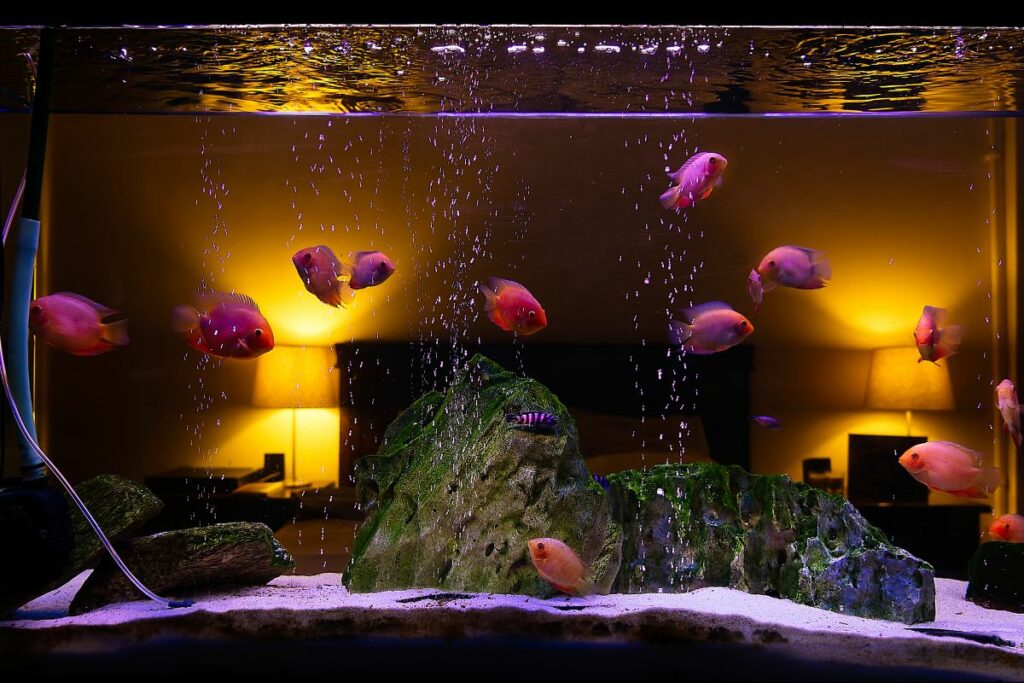
Understanding Your 36-Gallon Aquarium
A 36-gallon aquarium might seem like just a larger box of water to some, but for avid fish enthusiasts and the fish themselves, it’s a world of possibilities. Understanding the intricacies of such a tank is crucial for anyone wanting to venture into the realm of medium-sized aquariums.
1. The Space Advantage
One of the most obvious benefits of a 36-gallon tank is its size. This isn’t just a “larger version” of a beginner’s 10-gallon. With its added volume, it offers the freedom to house a diverse range of fish.
Whether you’re dreaming of a vivid school of tetras or a mix of colorful cichlids, this tank size can accommodate you.
2. Stability in Water Parameters
With larger volumes of water, there’s less susceptibility to rapid fluctuations in temperature, pH, and other essential parameters.
Think of it as a buffer. Smaller tanks can experience quick changes, which can be stressful or even harmful to fish. In a 36-gallon setup, these shifts are more gradual, offering a safer environment for your aquatic pets.
3. Aesthetic Appeal
There’s an undeniable beauty in watching a larger community of fish interact. The space allows for more intricate aquascaping—think layered plant designs, ornate rock formations, and fascinating hideouts. A well-designed 36-gallon tank can easily become the centerpiece of any room.
4. Care and Maintenance
While a 36-gallon tank provides more stability, it doesn’t mean you can slack on maintenance. The basics remain the same—regular water changes, filter maintenance, and consistent monitoring.
However, due to its larger size, tools like siphons and larger water containers become indispensable. Also, keep an eye on water parameters, as while changes are gradual, any imbalances can affect a larger number of fish.
Factors to Consider Before Stocking
Venturing into the world of a 36-gallon tank is exciting, but before you rush to your local fish store and start filling up that cart, pause for a moment. Ensuring you make the right choices now can prevent complications down the line. Let’s discuss some fundamental factors you should consider:
1. Water Parameters
1. pH Levels
Different fish have varying pH requirements. Some prefer slightly acidic waters, while others thrive in alkaline environments. Research the natural habitats of your chosen species to understand and replicate their preferred pH levels.
2. Temperature
Tropical fish need warmer waters, while some cold-water species prefer cooler temperatures. Investing in a reliable heater and thermometer can help maintain stable temperatures suited for your fish community.
3. Hardness
General hardness (GH) and carbonate hardness (KH) dictate the mineral content of your water. Some species have specific hardness requirements. Ensuring compatibility can make all the difference in fish health.
2. Compatibility
1. Temperament
Not all fish play nice. While some species are peaceful and community-friendly, others might be aggressive or territorial. Researching fish temperament is crucial to prevent unwanted clashes in your tank.
2. Diet
Having fish with similar dietary needs makes feeding more straightforward. It ensures all fish get the necessary nutrition without competition.
3. Breeding Behavior
If you’re considering keeping both male and female fish of a species, understand their breeding behaviors. Some species can overpopulate a tank if conditions are right.
3. Activity Levels and Territorial Behaviors
1. Swimming Patterns
Some fish love to dart around the top layers, while others are bottom dwellers. Ensuring you have a balanced mix can prevent territorial disputes and create a dynamic, engaging environment.
2. Hiding Spots
Fish, especially the shy ones, appreciate places to retreat. When considering your fish choices, think about the kind of hiding spots or caves they might prefer.
Top 9 Fish Choices for a 36-Gallon Tank
In the vast aquatic world, there’s a myriad of beautiful fish, each with its unique charm. But when you’re working with a 36-gallon tank, some species particularly shine in such an environment. Let’s explore nine top choices that are not only captivating to watch but also suitable for your tank:
1. Neon Tetras
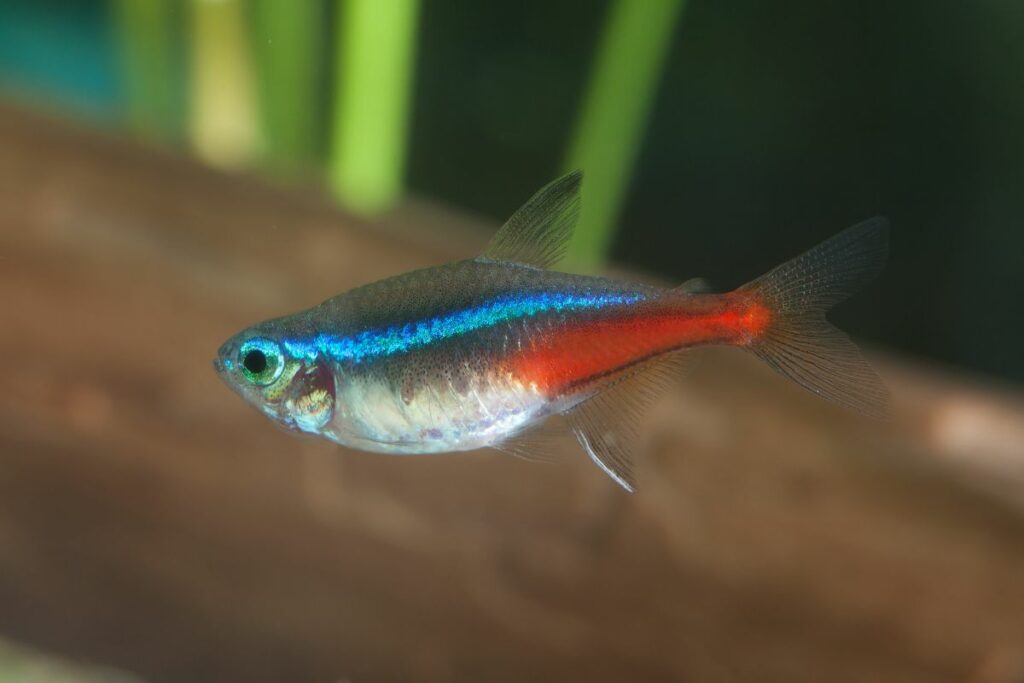
These small, vibrantly colored fish are a favorite among aquarists. Their bright blue and red stripes make them stand out, especially when kept in a school. Soft, slightly acidic water with a pH of 6-7. They appreciate densely planted areas for shelter.
2. Harlequin Rasboras

With their signature black triangular patch, these peaceful fish add a touch of elegance to any aquarium. Neutral pH levels (around 7) and plenty of plants to swim among.
3. Cardinal Tetras
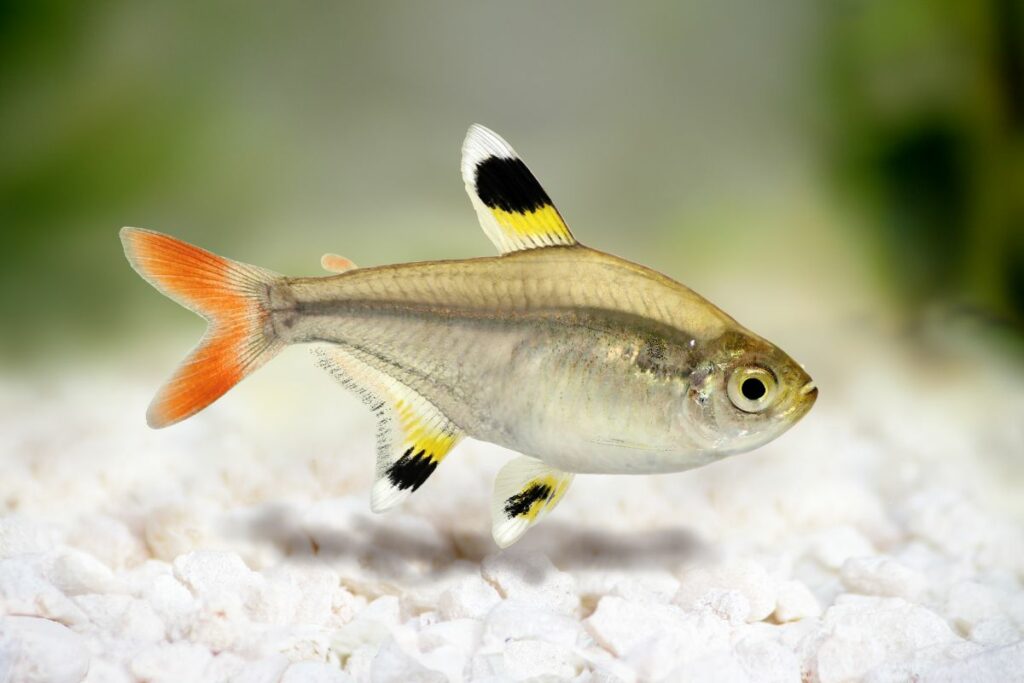
Often mistaken for neon tetras, cardinals have a more extended red stripe that runs the length of their body. They’re peaceful and perfect for community tanks. Soft, acidic water with a pH of 5.5-7.5. They love densely planted tanks.
4. Dwarf Cichlids (like Apistogramma)
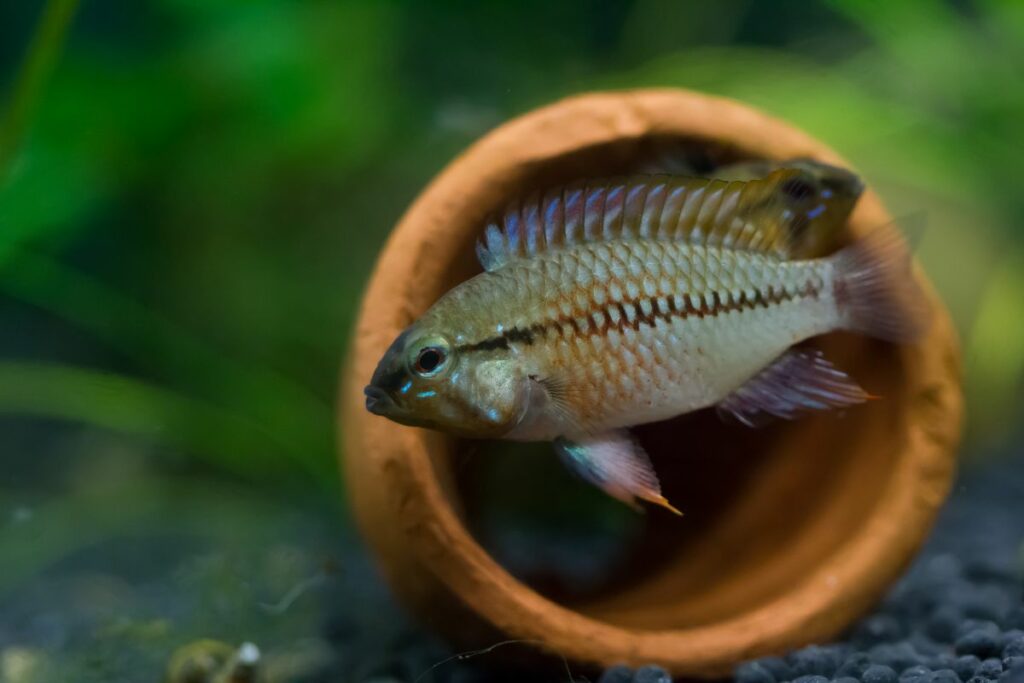
These are smaller cichlid variants, known for their vibrant colors and intriguing behaviors. Perfect for those who want a bit of personality in their tank. Soft, slightly acidic to neutral water. They also appreciate caves or hiding spots.
5. Shell Dwellers (Neolamprologus multifasciatus)
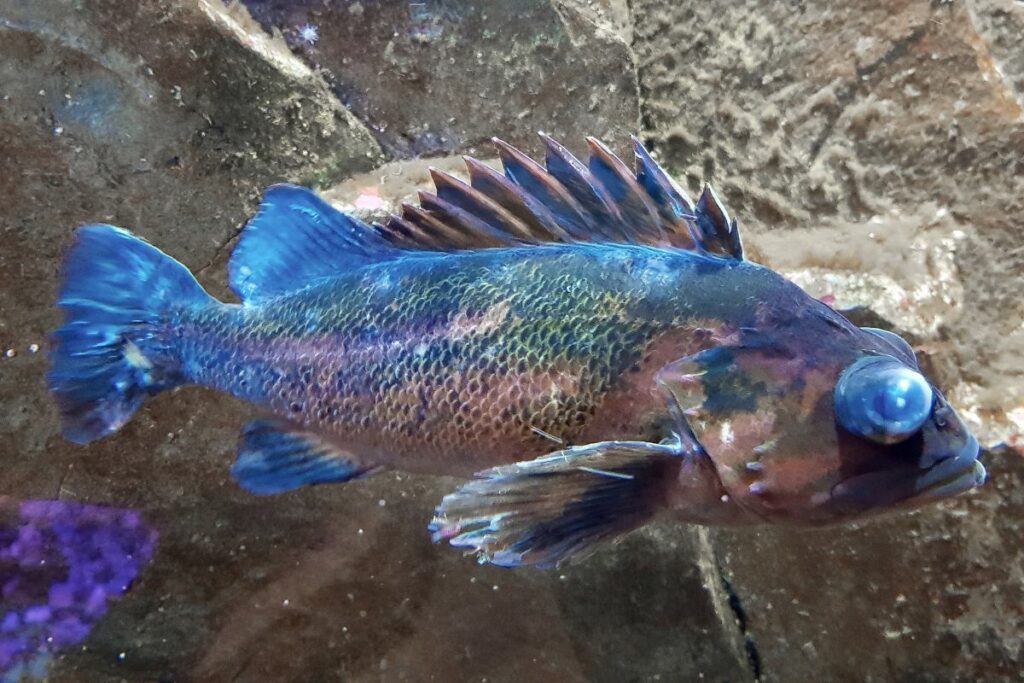
Unique to the African Lake Tanganyika, these tiny cichlids live and breed inside shells, making for a fascinating display. Hard, alkaline water with a sandy substrate for their shells.
6. Corydoras Catfish
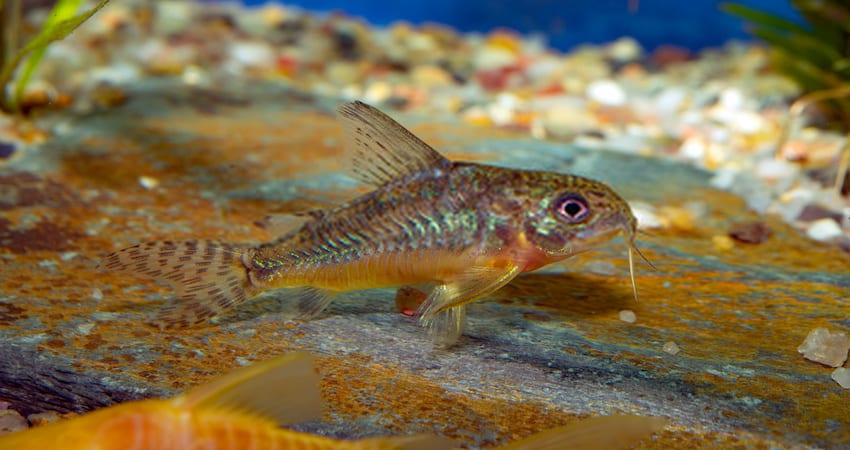
These friendly bottom dwellers are not only great cleaners but also fun to watch as they scuttle around the tank floor. Soft to slightly hard water with a fine substrate to protect their delicate barbels.
7. Kuhli Loaches
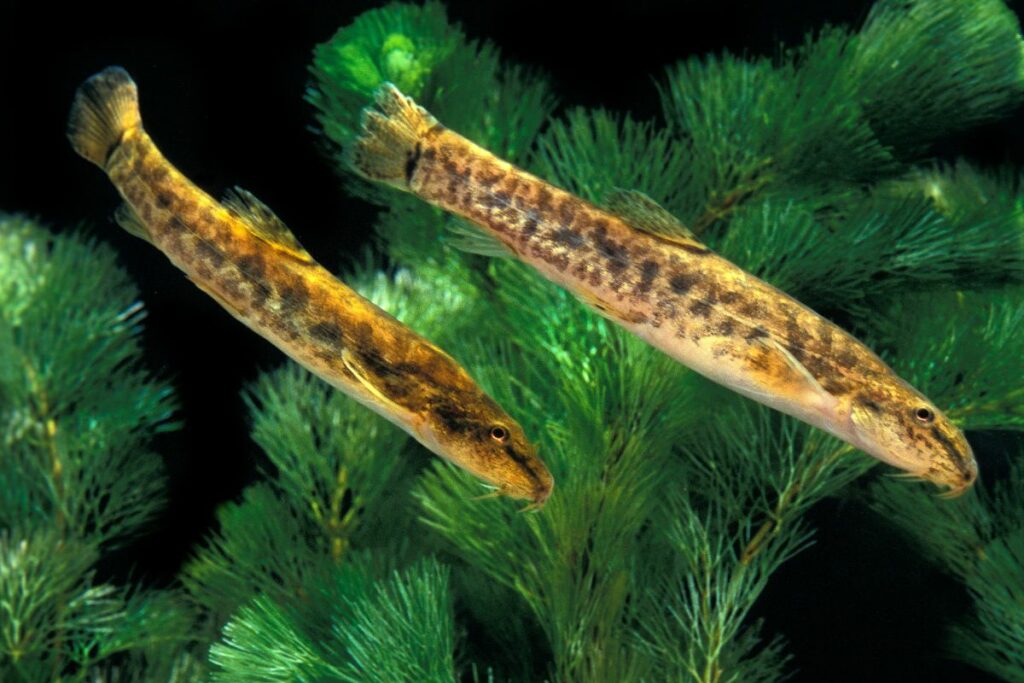
With their eel-like appearance and nocturnal habits, kuhli loaches are an interesting addition. They’re known to peek out from under rocks or wood. Soft to medium-hard water with plenty of hiding spots.
8. Dwarf Gourami
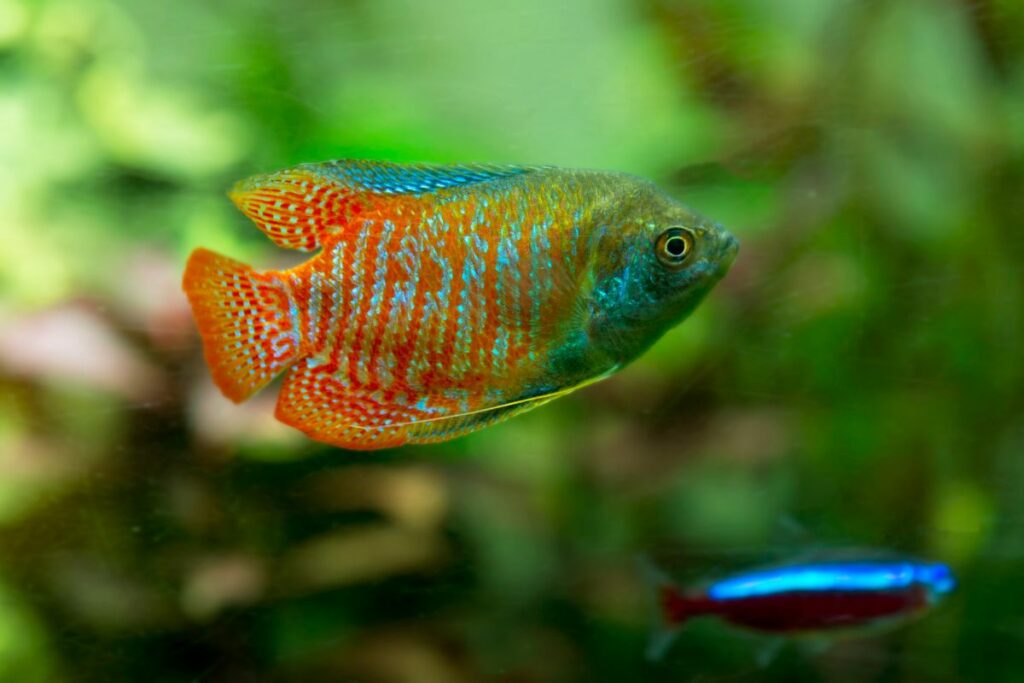
Their rich colors and labyrinth breathing system (allowing them to take in atmospheric air) make them a popular choice. They’re peaceful and can coexist with various tank mates. Slightly acidic to neutral water. They also appreciate some floating plants.
9. Platies
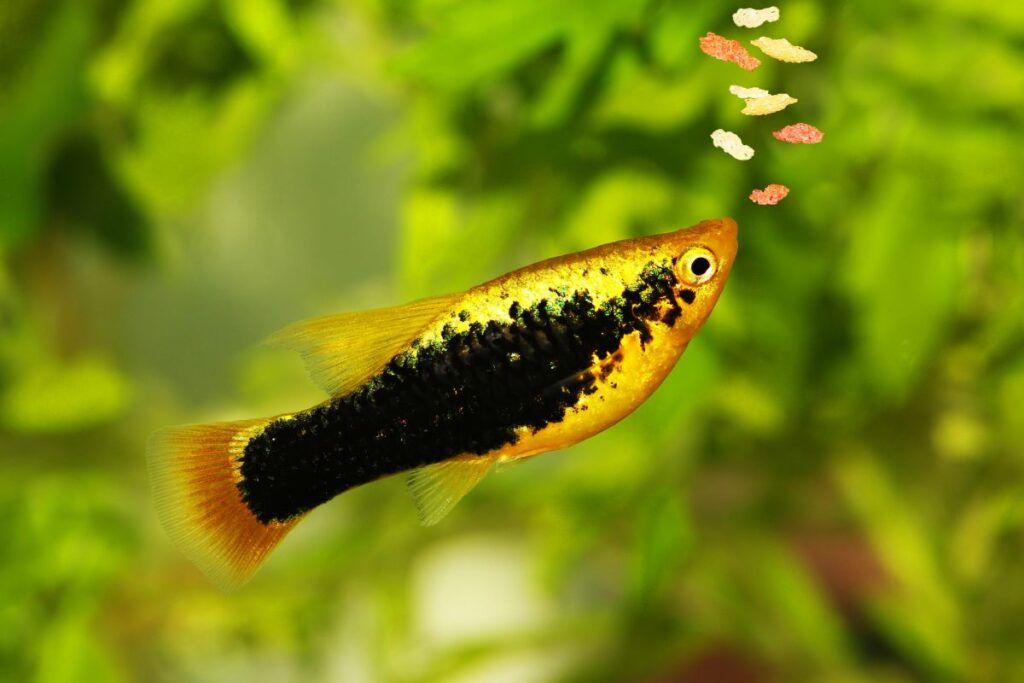
Active, colorful, and easy to care for, platies are a joy to have in a community setting. They come in various color patterns. Neutral to slightly alkaline water. They’re adaptable and do well with a mix of tank mates.
While these fish are excellent choices for a 36-gallon tank, always remember that a successful aquarium is about balance. Ensure that the combination you choose gets along well and that you provide the right conditions for each species to thrive.
10. Honey Gourami
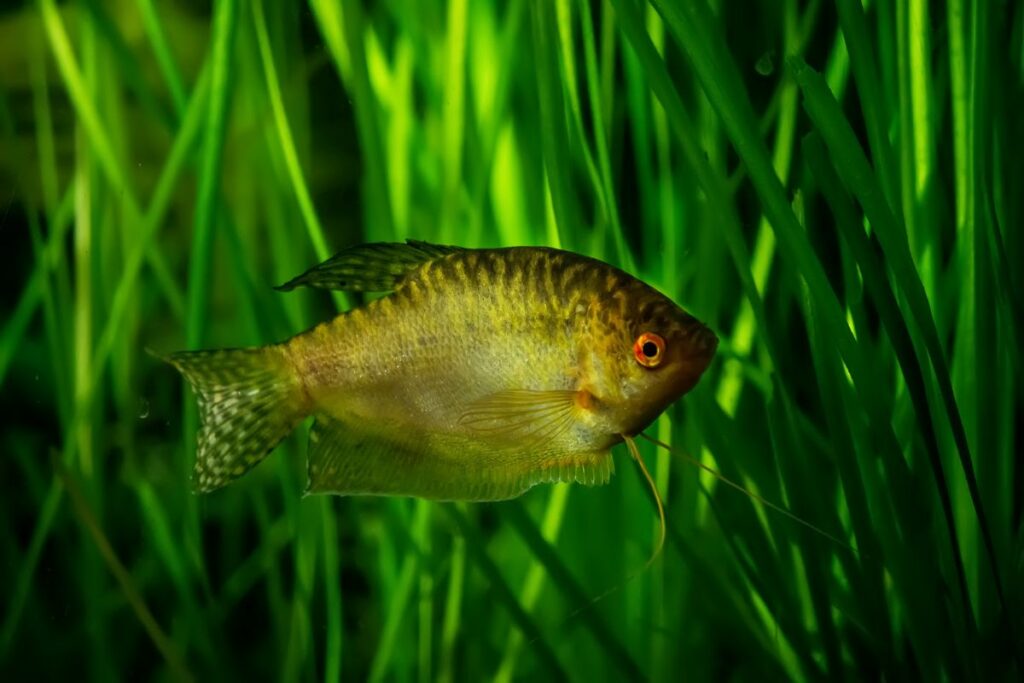
A gentler member of the gourami family, the Honey Gourami originates from Eastern India and Bangladesh. A beautiful shade of honey-orange with subtle variations in males and females.
Males often develop a brighter, almost fiery hue during breeding. Peaceful and can be a bit shy. They occasionally go to the water surface to gulp air, a behavior facilitated by their labyrinth organ.
11. Zebra Danios (Danio rerio)
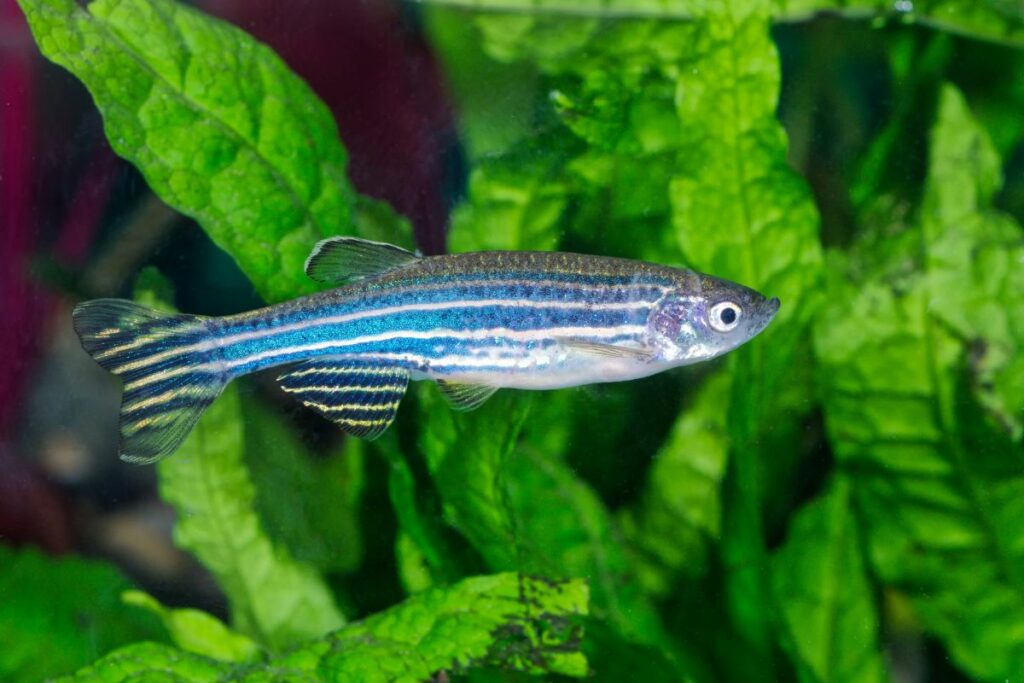
These active swimmers hail from South Asia’s Himalayan region and are known for their zippy nature. They have slender bodies with horizontal blue and silver stripes, resembling a zebra pattern.
They are also highly active, especially in the upper parts of the tank. They enjoy being in school. Open swimming areas with some planted sections. They can tolerate a range of water conditions.
12. Rummy-Nose Tetra
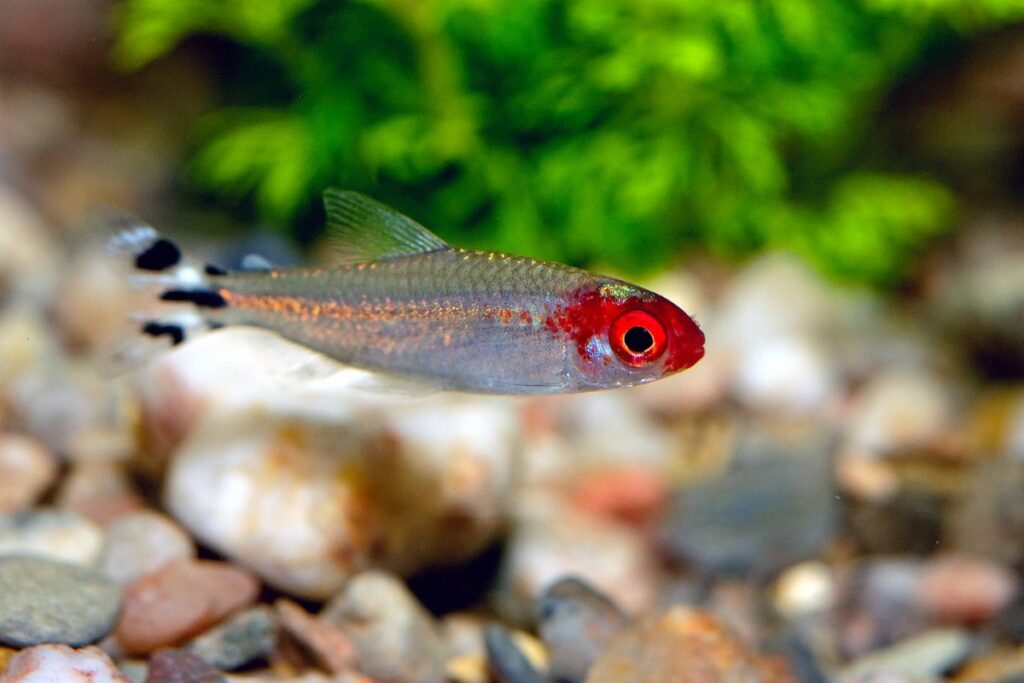
Native to South America’s Amazon basin, these tetras are named for their distinctive red noses. They have clear bodies with a prominent red head and black and white striped tail fin.
Also, this breed is peaceful schooling fish that are particularly sensitive to water changes, making their “rummy nose” a good indicator of water quality.
13. Bolivian Ram
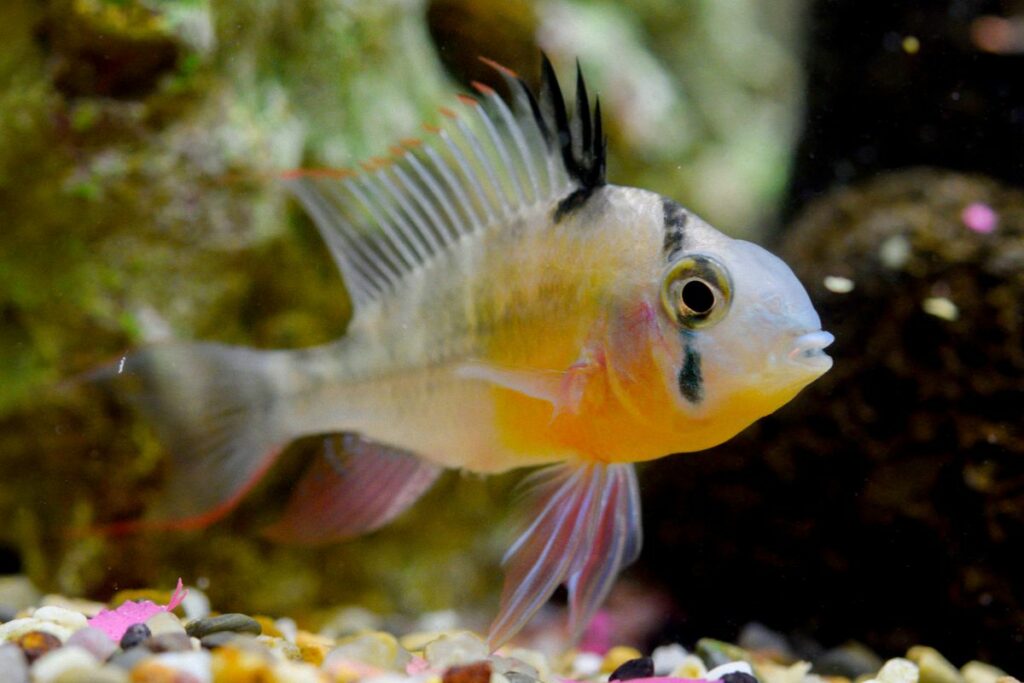
A South American cichlid, less intense than its close cousin, the German Blue Ram, makes it a good choice for community tanks.
They have an olive green body with red and blue highlights and a distinct black vertical line behind the eyes. Generally, the Bolivian Ram is peaceful but can be territorial during breeding. They engage in fascinating courting displays.
Aquatic Plants That Complement Your Fish Choices
Pairing the right aquatic plants with your fish not only enhances the visual appeal of your aquarium but also supports the well-being of your finned friends. Plants offer shelter, help stabilize water parameters, and can even serve as a supplemental food source for some species. Let’s explore a selection of plants that will complement the fish choices for a 36-gallon tank:
1. Java Fern (Microsorum pteropus)
- Overview: A hardy and low-maintenance plant, Java Fern can thrive even in low-light conditions.
- Benefits: Its broad leaves provide excellent hiding spots for smaller fish and shrimplets. It’s also resistant to being nibbled on by most fish.
- Placement: Attach to rocks or driftwood. Avoid burying its rhizome in the substrate.
2. Anubias (Anubias barteri)
- Overview: Another low-light-loving plant, Anubias is versatile and can grow in various conditions.
- Benefits: Like Java Fern, its thick leaves deter most fish from snacking on them. They also provide shelter and spawning grounds for some fish.
- Placement: Attach to decor or let it float. Ensure its rhizome is not buried.
3. Cryptocoryne (Cryptocoryne wendtii)
- Overview: ‘Crypts’ come in various sizes and colors, making them an attractive choice for mid or foreground placement.
- Benefits: Their dense growth offers cover for bottom-dwelling species like Corydoras and Kuhli Loaches.
- Placement: Plant in the substrate. They prefer stable conditions and can “melt” if parameters change suddenly.
4. Amazon Sword (Echinodorus spp.)
- Overview: With its tall and broad leaves, this plant can become a striking centerpiece.
- Benefits: The dense foliage provides excellent cover for fish. It’s also a favorite egg-laying site for some species.
- Placement: Plant in the substrate, preferably towards the back due to its size.
5. Water Wisteria (Hygrophila difformis)
- Overview: A fast-growing plant, Water Wisteria adapts to various lighting conditions.
- Benefits: Its bushy growth offers shelter, and the plant helps absorb excess nutrients, reducing algae growth.
- Placement: Plant in the substrate. Can be pruned to the desired shape and height.
6. Java Moss (Vesicularia dubyana)
- Overview: This moss is undemanding and grows in a tangled, web-like manner.
- Benefits: A favorite among breeders, Java Moss offers protection for fry. Shrimp also love to forage in it.
- Placement: Attach to decor or let it form a carpet. Can also float freely.
Tips for a Thriving 36-gallon Aquarium
Setting up and stocking a 36-gallon tank is just the beginning. The journey to maintaining a thriving aquatic environment involves continuous learning and commitment. To help guide you, here are some tested and proven tips for ensuring your aquarium thrives:
1. Establish a Routine
Fish and plants thrive in stable environments. Establish a routine for feeding, water changes, and equipment checks. Being consistent helps prevent issues and makes spotting irregularities easier.
2. Monitor Water Parameters
Invest in a good-quality water test kit. Regularly check the pH, ammonia, nitrite, nitrate, and hardness levels. Early detection of changes can prevent many potential problems.
3. Proper Filtration
Ensure your filter is appropriate for a 36-gallon setup. Consider factors like flow rate and filter media types. Clean and replace filter media as required. Avoid changing all media at once to preserve beneficial bacteria.
4. Balanced Diet
A diverse diet ensures fish get all the necessary nutrients. Combine high-quality pellets or flakes with occasional treats like live or frozen foods. Feed fish what they can consume in 2-3 minutes. Excess food can lead to water quality issues.
5. Provide Natural Hideouts
Rocks, driftwood, and live plants not only enhance aesthetics but also provide essential hiding spots, reducing stress for fish.
Safety First: Ensure decorations have no sharp edges and are safe for aquarium use.
6. Quarantine New Additions
Before introducing new fish or plants to your main tank, keep them in a separate quarantine tank for a few weeks. This helps identify and treat potential diseases or pests.
7. Control Algae Growth
Introducing algae-eating fish or invertebrates like snails and shrimps can help control algae naturally. Reduce the duration or intensity of tank lighting if algae become excessive. Aim for 6-8 hours of light daily.
8. Educate Yourself
The world of fishkeeping is vast. Engage in forums, read books, or join local fishkeeping groups. Sharing experiences and knowledge can be immensely beneficial.
9. Observe and Enjoy
Spending time observing your fish can be therapeutic. It also allows you to spot any irregular behavior or health issues early on. Remember, every tank is unique. Success often comes with patience, experimentation, and learning from occasional mistakes.
Conclusion
Maintaining a thriving 36-gallon aquarium is both an art and a science. With careful planning, consistent care, and a keen eye for detail, you can curate a beautiful underwater world.
Remember, patience is key, and every challenge faced offers an opportunity to learn and grow as an aquarist. Enjoy the journey, and let your aquarium be a reflection of your dedication and passion.






